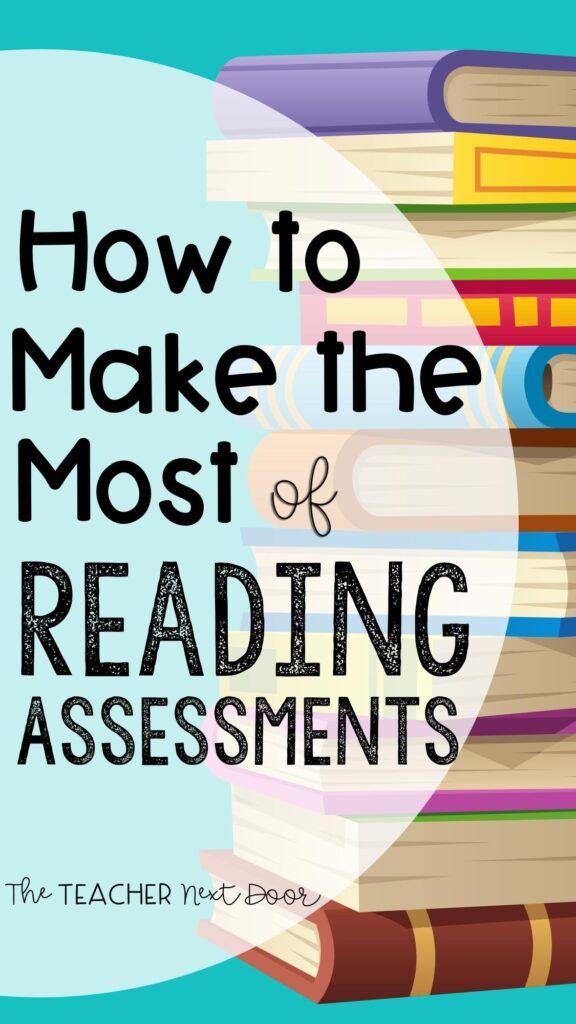
Does your school or district require you to do reading assessments a certain number of times per year? I’ve heard of teachers who are required to do this weekly, every other week, or monthly. What I don’t think I’ve heard of is a district that doesn’t have some kind of reading assessment requirement.
It’s easy to get bogged down in how this is one more thing on your never-ending list. But let’s be real, it IS vital information for you as the teacher!
What are students struggling with? What have they mastered? Which students still need more practice with that one specific skill? Assessing and analyzing the data is a key way for you to find out!
So how can you get the reading assessments done without taking up too much instructional time, but still get the valuable information that you need to help drive instruction?
In my years of teaching, I have found that there are a few specific things that will make these reading assessments as manageable and as valuable as possible. Keep reading to find out my best tips for making the most of reading assessments!

Tip #1: Streamline Assessments
There are tons of places to get reading assessments, both online and offline. If you are spending time each week or month searching them out, you need to streamline! If you could find ONE source that provides reading assessments for the whole year, you will save yourself hours! The added bonus here is that using the same type of assessment each time will make it a lot easier to compare data.
Not sure what to look for in an assessment? I look for assessments that are quick, easy to implement, and cover all of the reading strategies.
Tip #2: Create Routine with Reading Assessments
Classroom teachers everywhere know that routines are lifesavers! Creating routines for when, where, and how students take their reading assessments will make it much easier to get them done in a timely fashion. Building it into your centers or reading workshop rotation is an excellent idea. This will also ensure that students know HOW to take tests and what to do if a problem comes up, so you won’t have to spend valuable time explaining the same things over and over.
Tip #3: Efficiency is Key
Finding or creating assessments that are efficient will also be super helpful! You need assessments that give you the data you need while still being quick and easy to implement. You have a lot to do, and so do your students. The last thing you need is to spend a whole bunch of time on reading assessments that could be done quickly and easily!
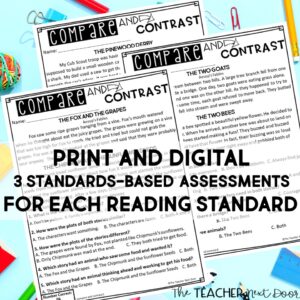
Tip #4: Make it Worthwhile
My last tip is to make sure that you are actually getting the information that you need from the assessments! Of course, you want to meet the requirements of your school district, but you also want to make sure the information that you gather is useable for YOU. Assessments should be targeted, standards-based, and provide information that informs your instruction.
Assessments
If your district is like mine, they might be very clear on how often you should be administering these reading assessments, but they don’t actually give you the assessments to use. Does this sound familiar?
If you constantly find yourself scrambling to find assessments that are quick and valuable, well friend, you are in luck! I created reading assessments that cover every single reading standard for 3rd, 4th, and 5th grade! Each grade level set comes with THREE assessments for all of the reading standards, so you can mix things up!
These come in print and digital, so you can easily incorporate them into your classroom routine. The best part? The digital versions are self-grading, saving you even more time!
3rd Grade Reading Assessment Bundle
4th Grade Reading Assessment Bundle
5th Grade Reading Assessment Bundle
Grab your FREE set of Reading Assessments AND the Student Data Tracker!
Of course, gathering all of this data isn’t enough. You also have to organize it in a meaningful way. Never fear, I have something to help with that as well. It’s a free, standards-based, data tracker that you can use to organize and utilize all of that great reading data. Click on your grade level below to snag this awesome tracker!
Thanks so much for stopping by!


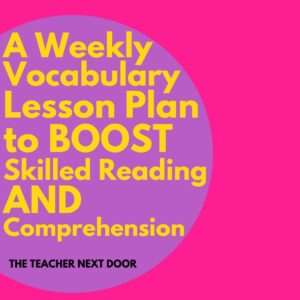
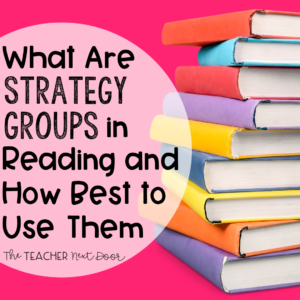
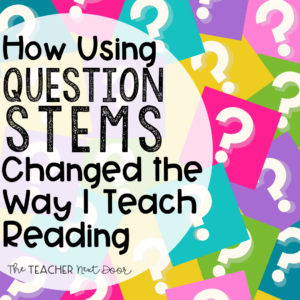


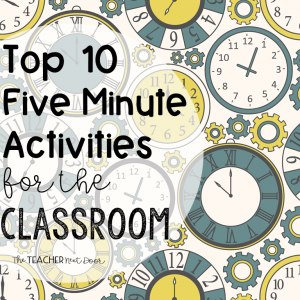






![DAY THREE DROPS! ⬇️⬇️⬇️
👉 Today, you can…
✔️ Grab done-for-you resources to keep your students engaged for $3
✔️ Grab FREE instant download activities!
✔️ Grab all of this week’s deals if you missed any!
ALL 5 of these comprehensive resources from my shop are $3 today to help fight spring fever in your classroom! 🌸🌼🌷
✏️ [BRAND NEW] Step-By-Step Personal Narrative Unit
✏️ Paired Texts Fiction to Nonfiction for Spring
✏️ 4th Grade Morphology & Vocabulary Unit
✏️ Main Idea Unit for 4th & 5th Grades
✏️ Figurative Language Complete Unit for Busy Teachers
Want the link to all the deals and freebies? Comment APRIL PARTY and we’ll send it directly to your DMs! 📫💌
PS - Don’t forget that you can still access all the Day 1 and Day 2 Deals too! 🩷](https://the-teacher-next-door.com/wp-content/plugins/instagram-feed/img/placeholder.png)

